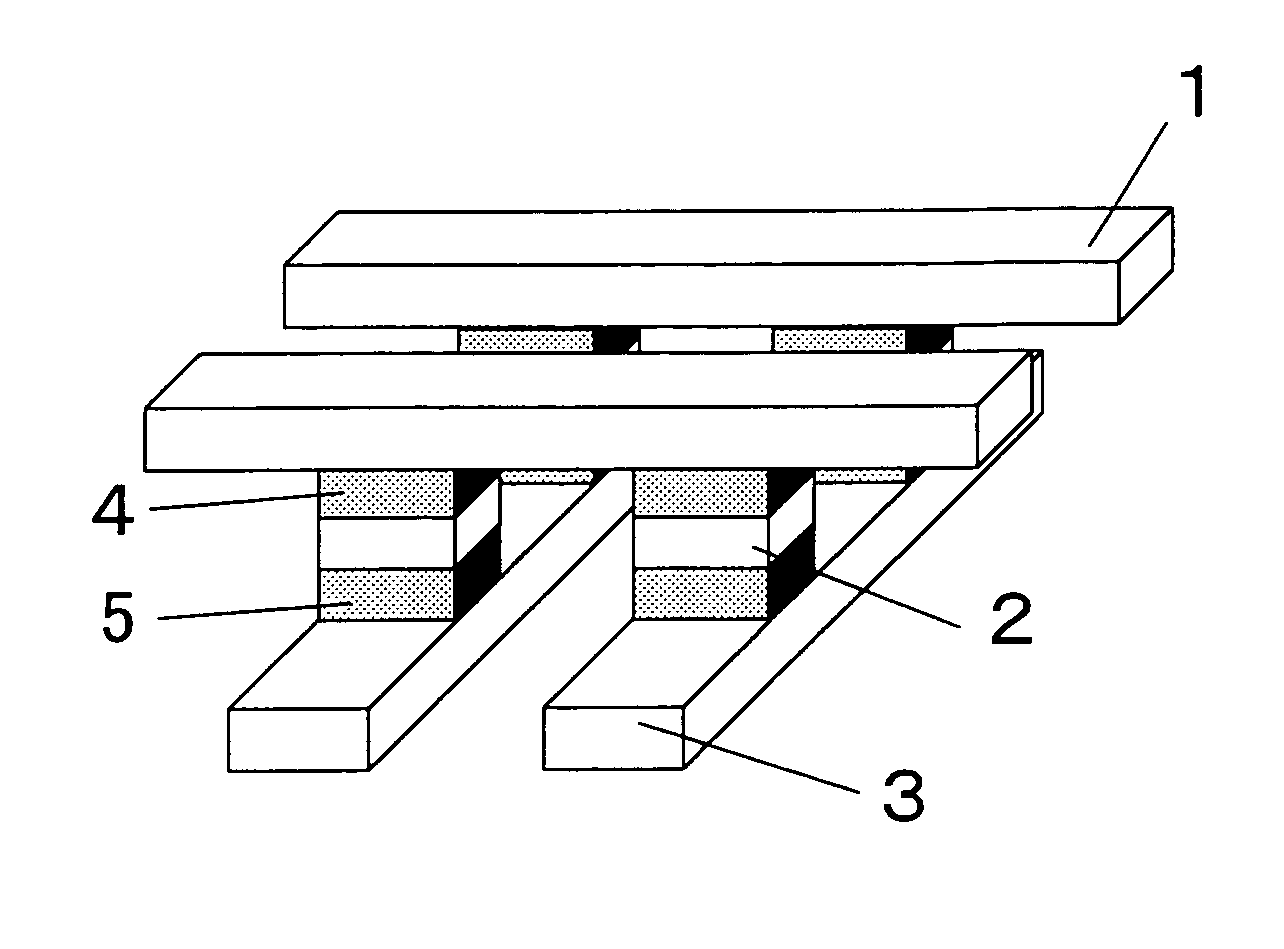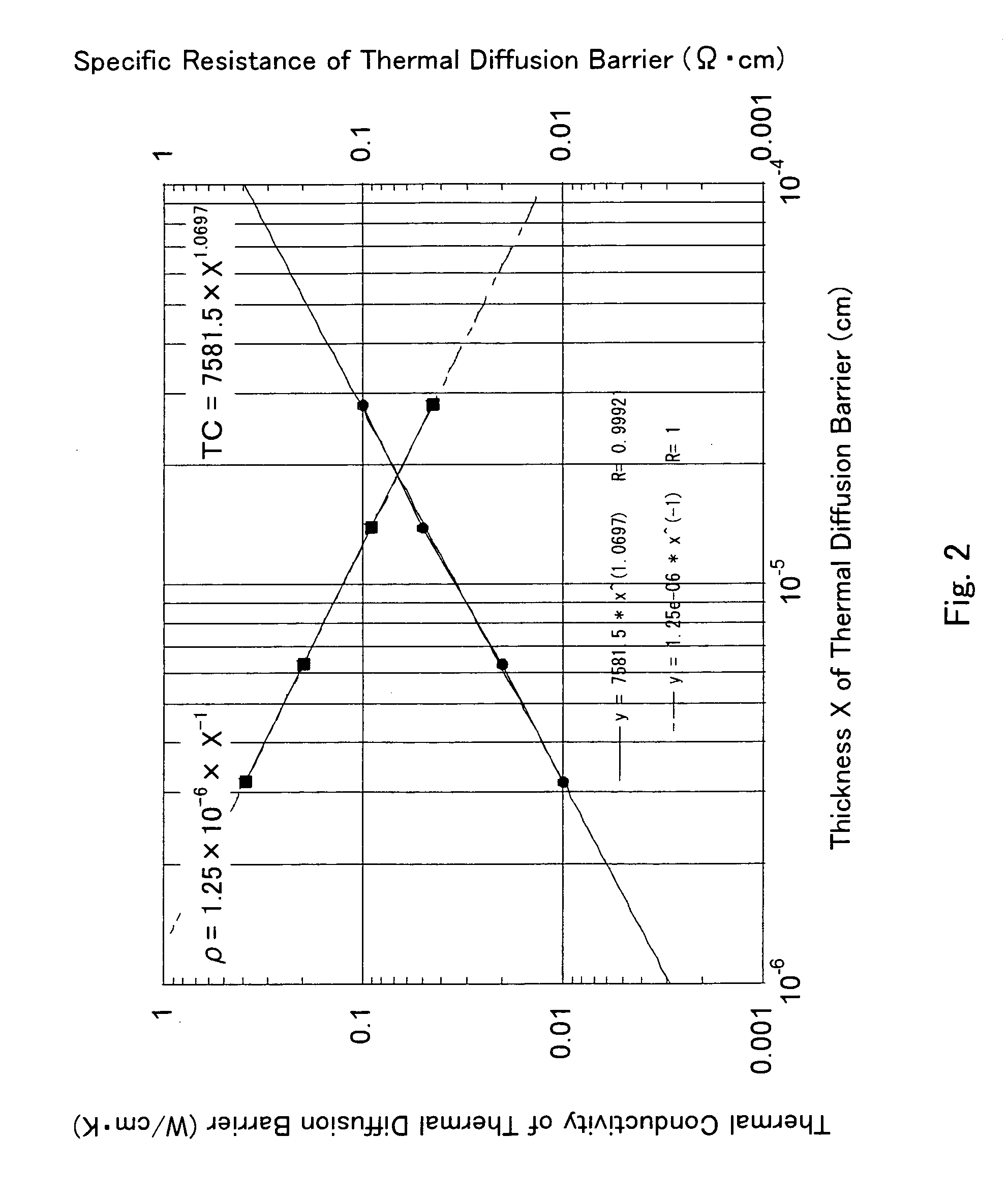Nonvolatile memory device
a memory device and non-volatile technology, applied in the direction of bulk negative resistance effect devices, instruments, basic electric elements, etc., can solve the problems of increasing the temperature of variable resistor elements, the speed of downsizing along a plane of flash memories is now close to its limit, etc., to reduce the program voltage applied to the selected memory, the effect of suppressing the diffusion of hea
- Summary
- Abstract
- Description
- Claims
- Application Information
AI Technical Summary
Benefits of technology
Problems solved by technology
Method used
Image
Examples
first embodiment
[0059]FIG. 1A is a perspective view showing a primary part of a memory array cell structure in the inventive device of the first embodiment. FIG. 1B is a cross sectional view taken along the vertical of a memory cell array shown in FIG. 1A. In the drawings, each electrical insulator provided between any two adjacent memory cells is not illustrated for simplicity.
[0060]The memory cell array in the inventive device has multiple memory cells 10 arranged like a matrix in a row direction and column direction. The memory cells 10 at each column are electrically connected at one end with a thermal diffusion barrier 5 to a common word line 3. The memory cells 10 at each row are electrically connected at the other end with another thermal diffusion barrier 4 to a common bit line 1. Both the bit line 1 and the word line 3 are made of an electrically conductive wiring material. The wiring material may be aluminum (2.37 W / cm·K at thermal conductivity), copper (3.98 W / cm·K at thermal conductivit...
second embodiment
[0082]FIG. 5A is a perspective view showing a primary part of a memory cell array structure in the inventive device of the second embodiment. FIG. 5B is a cross sectional view taken along the vertical of a memory cell array shown in FIG. 5A. The second embodiment is different from the first embodiment in the shape of the thermal diffusion barriers. Hence, the second embodiment will be explained mainly in relation to the shape of the thermal diffusion barriers. In the drawings, each electrical insulator provided between any two adjacent memory cells is not illustrated for simplicity.
[0083]The memory cell array in the inventive device has multiple memory cells 20 arranged like a matrix in a row direction and column direction. The memory cells 20 at each column are electrically connected at one end with a thermal diffusion barrier 25 to a common word line 23. The memory cells 20 at each row are electrically connected at the other end with another thermal diffusion barrier 24 to a commo...
third embodiment
[0094]FIG. 7A is a perspective view showing a primary part of a memory array cell structure in the inventive device of the third embodiment. FIG. 7B is a cross sectional view taken along the vertical of a memory cell array shown in FIG. 7A. In the drawings, each electrical insulator provided between any two adjacent memory cells is not illustrated for simplicity.
[0095]The memory cell array in the inventive device has multiple memory cells 30 arranged like a matrix in a row direction and column direction. The memory cells 30 at each column are electrically connected at one end to a common word line incorporating the thermal diffusion barrier 35. The memory cells 30 at each row are electrically connected at the other end to a common bit line incorporating the thermal diffusion barrier 34. In other words, the bit line 21 and the thermal diffusion barrier 24 in the second embodiment are modified as made of one thermal diffusion barrier material. Also, the word line 23 and the thermal di...
PUM
 Login to View More
Login to View More Abstract
Description
Claims
Application Information
 Login to View More
Login to View More - R&D
- Intellectual Property
- Life Sciences
- Materials
- Tech Scout
- Unparalleled Data Quality
- Higher Quality Content
- 60% Fewer Hallucinations
Browse by: Latest US Patents, China's latest patents, Technical Efficacy Thesaurus, Application Domain, Technology Topic, Popular Technical Reports.
© 2025 PatSnap. All rights reserved.Legal|Privacy policy|Modern Slavery Act Transparency Statement|Sitemap|About US| Contact US: help@patsnap.com



